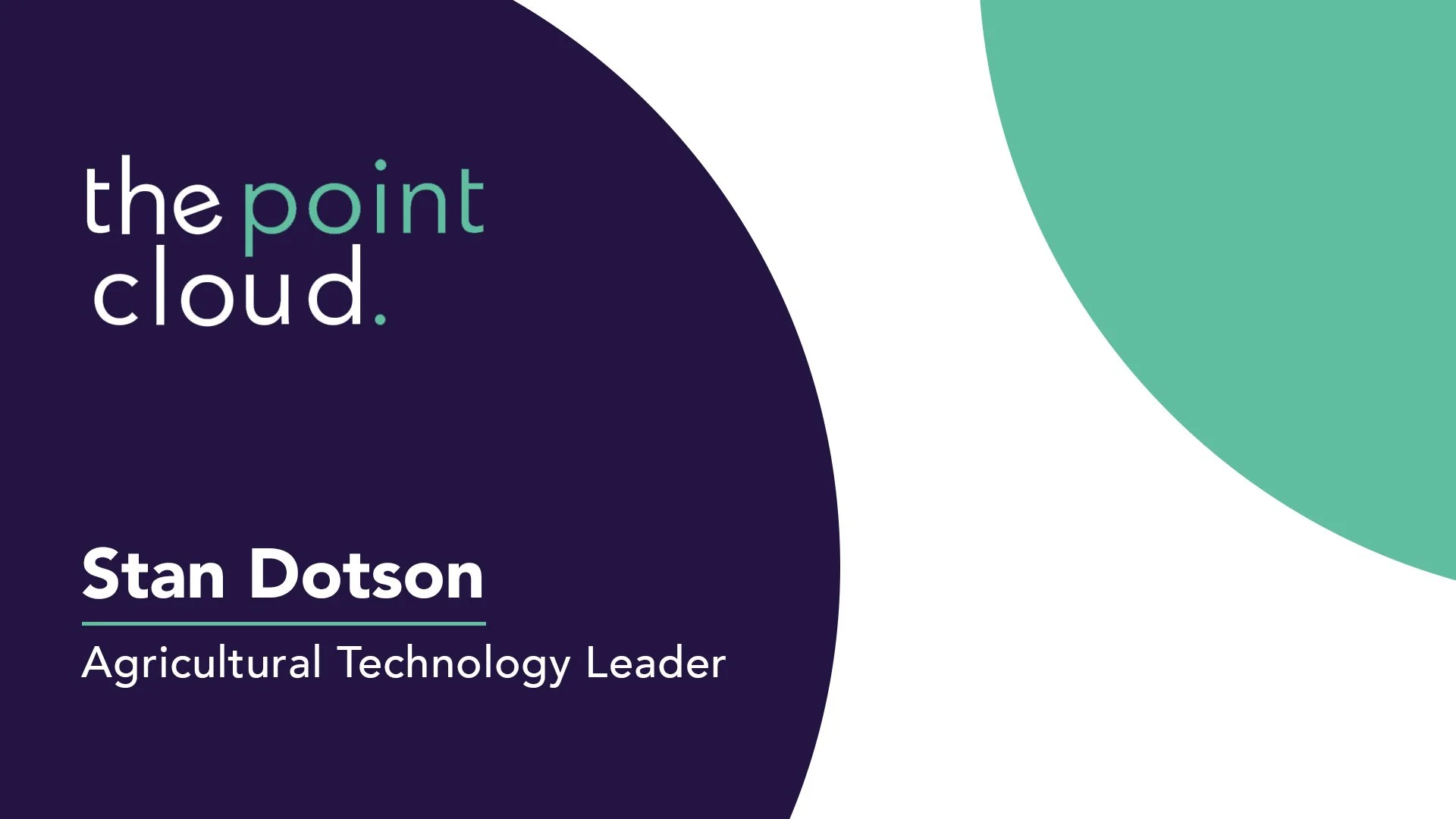Agtech Leader Stan Dotson: LiDAR on Phones Changes Everything
“That was the aha moment. iPhone now has a LiDAR unit and you can capture a 3D image.”
Agtech leader Stan Dotson joins The Point Cloud, Agerpoint’s interview series featuring leaders at the intersection of climate, agriculture, nature, and technology.
Hear the full interview above, watch and read highlights below, and listen and subscribe on your favorite podcast platform.
“The idea of creating digital twins and using LiDAR-based image capture - it was always with very expensive pieces of equipment, drones or planes carrying it,” says Stan Dotson.
Formerly the Vice President for Digital Transformation and IT Strategy at Bayer, the agtech innovator holds over 30 patents and has spent nearly four decades moving farming into the future. He says he “can't think of really any moment in my 38 year career where I've ever been bored.”
On The Point Cloud, Dotson remembers the moment that reframed how he saw the technology.
“The fact that you could put it in an iPhone and that that iPhone had that LiDAR . . . that was the a-ha moment,” he says. “iPhone now has a LiDAR unit and you can capture a 3D image. So it was just incredible.”
Dotson is now an advisor to Agerpoint, which applies the accessible LiDAR sensor to the process of collecting crop data.
He sees the company’s Agerpoint Capture app as “revolutionary technology.” Now, farmers can take their mobile devices into the field, capturing not just pictures but detailed 3D images of specific areas.
“You can simply just scan that row and create what is being called a digital twin. And then once you have that digital twin, then you can take that up into the cloud and you can calculate any type of data that you can imagine off of that,” he says.
This capability enables numerous analytical possibilities, from stand counts to leaf morphology.
This technology not only simplifies the collection process but also creates a reliable record of the captured data.
“You know who captured it, when they captured it, where they captured it. And of course, you have the what - the actual image, the digital twin that's captured. So, very trustworthy,” he says.
Asked about the application of this technology, Dotson highlighted its potential in R&D for agricultural companies.
“Having this capability out there in the R&D,” he says, “so that you can collect information about that trial and be able to look at the ultimate yield that comes from that, and then be able to look at it and help explain away some of the variables, I think is really important.”
Dotson’s insights into the use of LiDAR on smartphones underscore a significant shift in agricultural technology, promising more precise and accessible data for the agriculture industry.
—-
Please subscribe, like, rate 5 stars, tell your friends, and join the conversation with Agerpoint on LinkedIn and X (Twitter).


